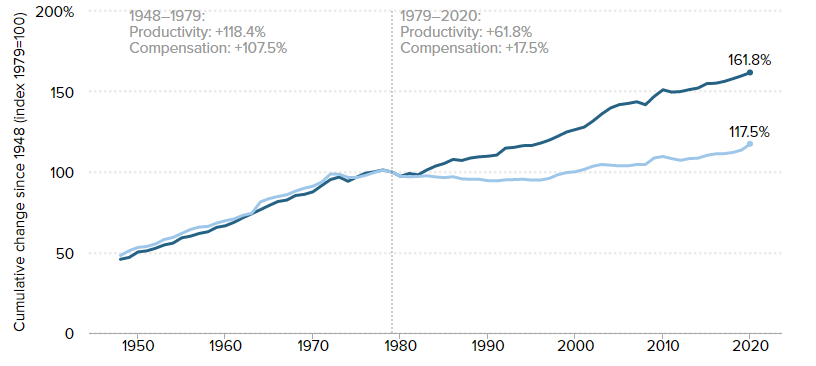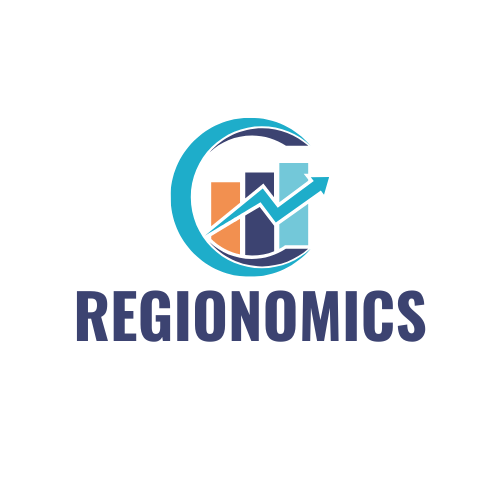By now you have heard that the United States is facing a labor supply shortage unlike anything we have seen in a generation. People think others just do not want to work, and that is what is driving this problem. Well, if you are in the economic space like we are, you know that is a simple answer to an extremely complicated problem. We know that it is not just individuals not participating in the labor force but a whole host of other reasons resulting in this issue. So, what are businesses going to do?
Nico:
Automation is happening everywhere. Businesses are looking at the long game which means investing in equipment that they can rely on. Workers will still play a key role but what that role looks like is changing. I was just talking to a guy the other day and he is looking for software techs to help upload and maintain the software on his new sheet metal press. (machine that cuts sheet metal) whereas before this would be an employee spending 8 hours a day cutting it up, only to do about half of what this machine could do.
David:
Does automation mean less available jobs? No, not necessarily. Labor force participation rates dropped below 60% for the first time in over a decade according to the Department of Labor. There is plenty of opportunity for employment in our Region, it is getting people to work by addressing employment barriers that is the challenge. Education is one of those barriers. As the automation of many historical tasks continues, the shape of the workforce must adapt to the new environment. Technical skills, healthcare workers, and trade skills are some of the most in demand skillsets in our area. Luckily, there is an abundance of resources that exist in order to upskill our workers.
Nico:
This trend is something we have seen over the years. I think the pandemic sped it up. With the influx of capital businesses received and the drop in labor participation business saw themselves in a place where they could move up their automation timeline. Like David said, jobs are not going anywhere, they are changing. Removing barriers and maybe destigmatizing the challenges of changing professions might be the recipe to transform our workforce. This is historically how countries have created more wealth across the socioeconomic spectrum. Innovative technologies + New Skills = Increased Productivity, which if managed fairly should be shared by the entire workforce.
David:
Absolutely, and really that is where the Equity in the Diversity, Equity, and Inclusion conversation is so relevant. There has been a disparity in wealth created by economic success. The Pew Research Center states that, since 2001, middle-income families net worth has fallen by 20%, lower income families net worth by 45%, while upper income families have increased their median net worth by 33%. In fact, since the Great Recession of 2009, only the top 5% has gained wealth. Automation should enable the upskilling of our workforce to create opportunities for lower- and middle-income wage earners. As value is created by operational efficiency, it is absolutely critical that we establish regional incentives to ensure the entire labor force shares in the success.

Pew Research Center Study
Nico:
And that is what has always been so interesting to me. How do we in fact get the wages of these lower income earners to increase without, at the same time, driving up the cost of the same goods they need to purchase, and automation could very well be the key. In theory as productivity goes up so should workers’ pay but we have not seen that. From 1979 to 2020 worker productivity has risen 61.8% while average hourly pay only grew 17.5% adjusted for income. Automation may be a way to keep additional costs low resulting in the price of goods staying flat while workers’ pay increases. This also is where the labor shortage comes in, and employers having to compete for workers. But it has not played out exactly as I expected. It has been bewildering to me to see so many good high paying jobs with advancement opportunities go unfilled, while you still have workers in lower wage jobs with little to no advancement opportunities. Why aren’t these people moving to these higher paying positions? Maybe that is some data we can report in a later issue. Until then business will continue to find solutions to the labor shortage and ways to keep costs down. Upskilling employees will be essential both for their operations and the wage growth we know our economy needs.

The Productivity–Pay Gap | Economic Policy Institute (epi.org)
David:
Workforce issues are intimately linked to economic growth. Automation is certainly a moving train that will enable business innovation on an enormous scale. As businesses start to shift the way they operate, it will be incredibly important to be forward thinking from a community and resource perspective to enable an agile workforce.
Nico:
I could not agree more, and it’s organizations like ours that are providing a roadmap for employers and employees to navigate this new terrain. We can assist businesses looking to expand or speed up their automation timeline while simultaneously connecting employees with resources to upskill their talents to be a vital asset to any business
Thanks for reading our thoughts on what we are seeing in the economy. Be sure to check back around this time next month for our next piece. If you have any thoughts on this piece or what we should write about next drop a comment below, we’d love to hear from you.
David White, Director of Firelands Forward
Nico Samaniego, Business Development Coordinator at Erie County Economic Development Corporation

